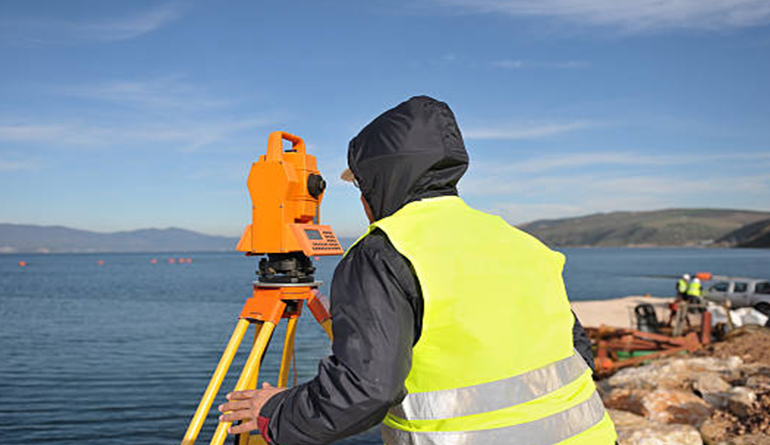
Hydrographic Survey
A hydrographic survey is a specialized type of surveying conducted to map and study underwater features of bodies of water, including oceans, rivers, lakes, and reservoirs. These surveys provide essential information for navigation, maritime safety, coastal management, marine resource management, environmental protection, and scientific research. Here are the key components of a hydrographic survey:
Survey Planning: Hydrographic surveys begin with careful planning to determine the objectives, scope, and methodology of the survey. Surveyors consider factors such as the area to be surveyed, water depth, tidal range, seabed composition, hydrographic conditions, regulatory requirements, and the intended use of survey data.
Data Acquisition: Surveyors use a variety of instruments and techniques to collect hydrographic data, including single-beam or multibeam echosounders, side-scan sonar, sub-bottom profilers, acoustic doppler current profilers (ADCP), and survey-grade GPS or GNSS receivers. These instruments measure water depth, seabed characteristics, underwater features, currents, and other parameters relevant to the survey objectives.
Echolocation: Echosounders emit acoustic pulses that travel through the water column and reflect off the seafloor. By measuring the time it takes for the echo to return to the sensor, surveyors can calculate water depth and create bathymetric maps of the seabed.
Side-scan Sonar: Side-scan sonar systems produce detailed images of the seafloor by emitting acoustic signals sideways from the survey vessel. These images reveal features such as underwater terrain, vegetation, marine life, shipwrecks, and man-made structures.
Sub-bottom Profiling: Sub-bottom profilers use low-frequency acoustic signals to penetrate the seafloor and generate cross-sectional profiles of sediment layers and geological structures beneath the seabed. This information is valuable for studying sedimentation processes, geological hazards, and subsea infrastructure planning.
Navigation and Positioning: Accurate positioning is crucial for georeferencing survey data and producing high-quality hydrographic charts. Survey vessels use GPS or GNSS receivers coupled with inertial navigation systems (INS) or motion sensors to determine their precise position, heading, and attitude while conducting surveys.
Data Processing and Analysis: After data collection, surveyors process and analyze the raw data to remove noise, correct for instrument errors, and interpolate missing or erroneous data points. Advanced software tools are used to visualize, interpret, and manipulate the hydrographic data to extract relevant information and generate charts, maps, and 3D models of the surveyed area.
Quality Assurance and Verification: Hydrographic survey data undergo rigorous quality assurance procedures to ensure accuracy, reliability, and compliance with industry standards and specifications. Surveyors perform independent checks, error propagation analysis, and validation against ground truth data to verify the quality of the survey results.
Chart Production and Dissemination: The final output of a hydrographic survey is a comprehensive set of hydrographic charts, maps, and datasets that provide essential information for maritime navigation, safety, and management. These products are disseminated to relevant authorities, maritime stakeholders, and the public through official channels and electronic navigational systems.

